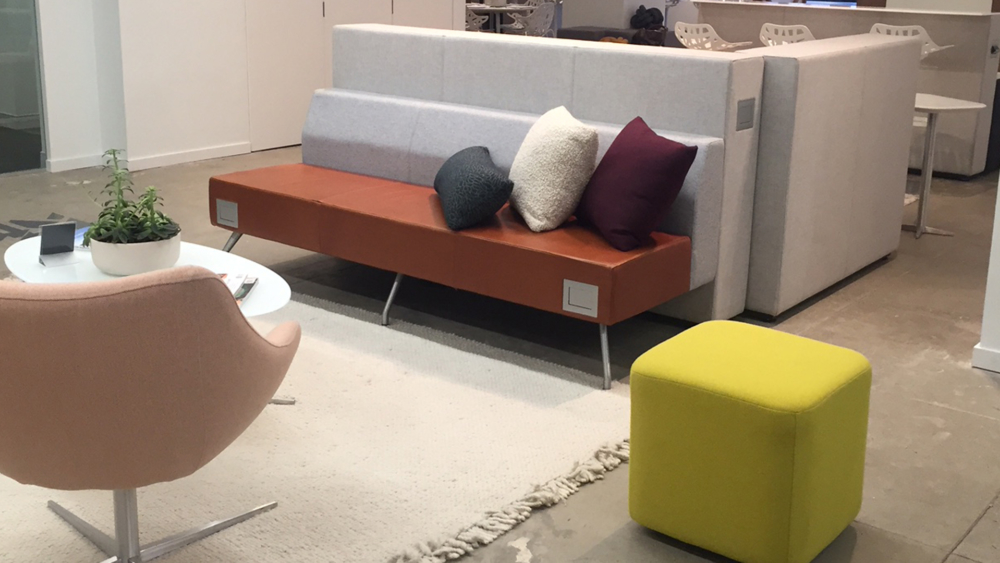
Designing for a Millennial Work Force
The term millennial can bring out mixed emotions. It’s a word that is either said with pride or distain, and there are so many stereotypes surrounding millennials it can be overwhelming. In reality, millennial is just the term used for the generation of people who were born, depending on the source, between 1981 -2000. Because the millennial generation spans 20 years, it is made up of approximately 75 million people. As the baby boomers begin retiring, millennials are rapidly taking over the workforce. This is a generation where the oldest of the group is about 36 years old and the youngest is about 18, can be split into two smaller groups, older millennials and younger millennials. Both have distinctive characteristics. Now imagine trying to design anything for that widespread group of 75 million people!
Kimball Showroom, New York
There are so many thoughts and opinions on what millennials want and need from the build environment. The older the group gets, the more we are seeing the effects of the millennial generation in work place design. For instance, many offices have become a place of perching and benching systems with open concepts and collaborative spaces mixed in that also include private areas for meetings, conferences or high concentration work. Additionally, with most companies switching over to laptops, there are increased opportunities to use flexible spaces. The idea is that mixing a variety of spaces in an office environment will allow employees flexibility so they can work from anywhere. This need and want for variety stems from our experiences working in groups on projects in our early educational years. It also stems from our involvement with extracurricular activities which forced us to learn to be extremely flexible as to where and when we do our work. I, for example, did multiple papers, homework assignments, and projects while sitting on a band bus driving to a competition or on a tennis court sideline waiting for my next match. Creating these open concept spaces with variety of work stations or soft seating is one way a company can appeal to the millennial work force.
Kimball Showroom, New York
One mistake made when designing work spaces for the millennial generation is making the work space too open and flexible. The rising trend of having one long library style table with no storage and no place to keep anything personal can back fire; especially when it comes to the older group of millennials who at times identify more closely with the Gen X group. Humans by nature have a need for their own space and territory. Creating spaces that are so flexible you can sit anywhere at any time makes it hard to establish a space that is yours. For some, it can also give the impression that management doesn’t care about their employees or that they think employees are easily replaceable. Others feel that if this is the way the office is set up, why have an office at all? Why not just work from home or a coffee shop, if there is group work to do? You see, while millennials like the flexibility and freedom to move around an office that doesn’t mean millennials don’t value the need for a set space within a group structure.
No matter your opinion of the millennial group, all too soon the entirety of the generation will be out of college and in the workforce. Designing offices with a healthy mix that will appeal to all generations is a great way to ensure that the new and the already established workforce are both happy and productive.